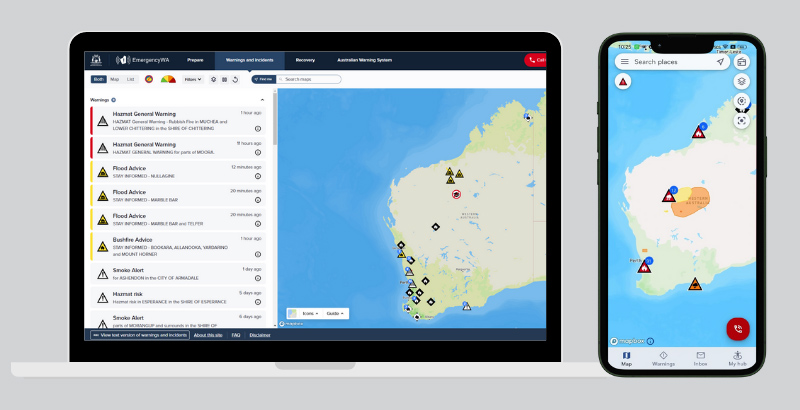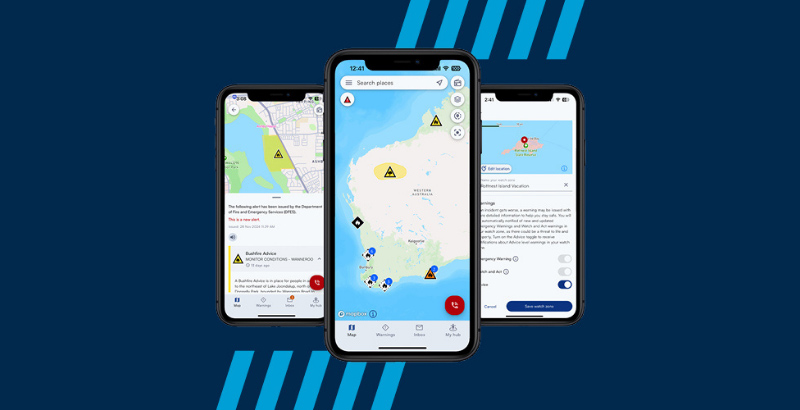In some circumstances DFES may issue an Emergency Alert telephone warning. Emergency Alert is a national telephone warning system which sends voice messages to landlines and text messages to mobile phones within a defined area under immediate threat. Emergency Alert relies on telecommunications networks to send messages, and message delivery cannot be guaranteed.
Emergency Alert is not used in all circumstances. Whether emergency services decide to issue telephone warnings through Emergency Alert will depend on the nature of the incident.
Familiarise yourself with ways to stay informed so you are prepared with a range of information sources during an emergency and remember to check them continuously to stay aware of local conditions.
It is important that you do not rely solely on receiving an official message and should always be aware of what is happening around you, as you could find yourself suddenly in danger. Act decisively the moment you know there is danger.













